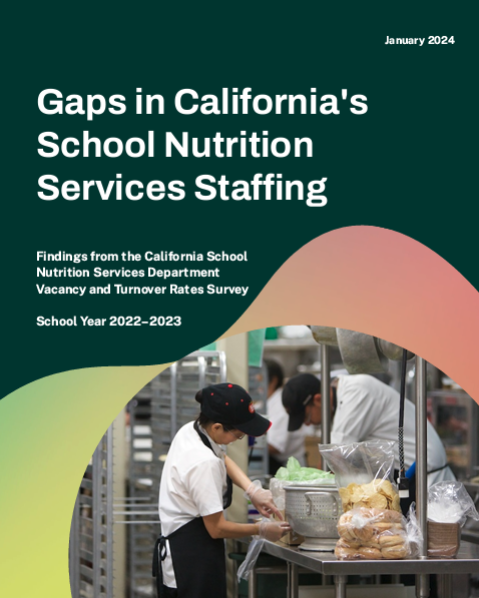
By Dale Marsden
It’s now four years since the COVID-19 pandemic caused an upheaval to our lives and our school systems, And yet, the pandemic is only partly to blame for the present staffing crisis facing all industries, including education.
Following the year that sent us all home to connect via Zoom calls, virtual classrooms, and asynchronous learning, the post-pandemic environment was a catalyst for phenomena like the Great Resignation in 2021. Workers who survived the initial layoffs in 2020 suddenly felt secure enough to re-examine their work-life balance and resign from jobs in unprecedented numbers.
The post-pandemic environment also brought us the “Gray Tsunami,” the accelerated retirement of the Baby Boomer population, compacted into a shorter and more immediate time frame, leaving job vacancies in their wake.
But the main perpetrator of our staffing crisis (not to mention our low enrollment woes) are the current birth rate trends. Job search companies like Indeed and Glassdoor agree that we simply do not have enough people to replace those who are exiting the workforce (Indeed & Glassdoor, 2023). This birth rate deficit is a twenty-year problem and will not be resolved over the next few generations. That’s a long time to keep a ‘Help Wanted’ sign up and suffer the experiences and consequences of a lack of customer service. It is affecting businesses everywhere, including our public education system’s ability to provide exemplary support to our families and students.
As a result, it’s a job seekers market, with wages on the rise and job openings at a surplus. At schools, it means kids without support, services, or lingering on waiting lists.
What is being done to solve the talent crisis?
Recently, I had the opportunity to speak with Jannelle Kubinec, CEO of WestEd; Jerry Almenderez, Superintendent of Santa Ana Unified Schools; and Randy Barth, CEO of Think Together, all state and national leaders in education. We discussed their specific thoughts on the Gray Tsunami, the talent crisis and what districts can do to maintain or even improve the quality and timeliness of their services.
They shared their thoughts on how districts can think about the generational differences in the career expectations of our decreased workforce, the needs of modern students and the demands that these students are facing. As well as, how mind shift changes in the structure of the classroom, the structure of the entire school schedule and long-term organizational level strategies can solve the problem at a high-level and not just patch symptoms.
“The state has made a historic investment in ELO-P and this has not yet been fully utilized to offer our families options” Randy Barth pointed out. Jerry Almenderez added, “the education and workforce landscape has changed. Our schools need to keep up. We need to re-examine our definition of the classroom and better understand the skills students and teachers need to thrive in this current economy. Perhaps we shift to less ‘brick and mortar’ classrooms to lab-type settings in industry or workforce settings, bringing students and teachers to the real world of work for at least part of their school week.”
Historically speaking, teaching has been a long-term career, a lifelong passion. However, we are starting to see a shift away from teaching as a permanent position and beginning to see folks treat teaching as a stepping stone along the path of their career. Jannelle Kubinec saw this for herself at WestEd where they currently have four different generations of workers in their organization. “The expectations of our Gen Z and Baby Boomers are very different with regards to expectations for career advancement and we need to evolve how we approach career development with that in mind.”
Clearly, we will have to adapt to this new breed of professional, providing opportunities for them to work in their passion areas, strike the work-life balance they are seeking and deploy them in creative and effective ways to meet the needs of and engage the modern student. This could be a win-win for schools, as creative program design not only attracts new talent to education but staves off chronic absenteeism and creates well-attended programs with a highly engaged student body. And, we must implement strategic and efficient talent acquisition strategies to fill the pipeline with interested and dedicated individuals who can become our student mentors and the next generation of education’s leaders.
Modern Students Require Modern Solutions
Thanks to the State’s investment in ELO-P and other programs, districts have the opportunity now to use innovative programming to meet student needs in and out of school time, allowing schools to retain existing staff and developing new programs and experiences to entice a new workforce into the district.
Work-Based Learning through programs like Internship and Apprenticeship are an ace in the hole for school districts looking to lighten the workload on their staff while increasing the efficacy of student learning. By building partnerships with local employers and bringing those employers into the classroom, or better yet taking the students out of school and into the workplace, districts can bridge the gap between school and the real world of work. “We need to continue working with legislators to optimize learning modalities of students, and teaching modalities of this generation’s workforce,” suggests Jerry Almendarez, superintendent of Santa Ana Unified School District. “The typically industrialized design of our education system and workforce demands have changed,” and one way we can accomplish this is through, “focusing on competency designed systems that bridge to the workforce through internship and work-based learning experiences.”
Creative new programming, wrapping academics within topics the students love, is another tool that districts can use to increase attendance and engagement while allowing teachers to educate outside of the confines of the standardized tests. This can be anything from enrichment experiences in arts and STEM, to skills-based learning such as automotive maintenance, woodshop, cybersecurity and everything in between. “Expanded learning programming may be an opportunity to reimagine districts’ human capital infrastructure in a blend of certificated staff with non-credentialed staff, offering a range of support services as schools serve as anchor organizations in their communities.” added Think Together’s Randy Barth. “If districts are laying off traditional teachers from the classroom, they can create expanded learning programs that require a fully credentialed teacher, and pay for that teacher from new state funding.”
Superintendent Almendarez suggests, “offering AM and PM sessions to both students and teachers,” as a way of increasing attendance and utilizing existing staff more effectively. Gone are the days of the homogenous family schedule, the nine to five and rigid five-day school week. The modern education landscape demands more flexibility and programs built to meet students where they are. Randy Barth agrees and advocates “for a 9-hour school day and longer school year. This can not only help working families, but better engage students with creative non-traditional programming, reducing chronic absenteeism and student learning loss.”
The paradox of a massive staffing shortages with record state funding available occurring amid low enrollment, the threat of school closures and budget cuts is not lost on administrators; these competing forces don’t have to mean lay-offs but can instead be a catalyst for the creation of new programs to attract students back into schools and give existing staff another avenue to express their passion for education.
“What we have is an allocation problem,” says Janelle Kubenic of WestEd. “We look at who’s coming into the workforce now and we don’t have a match. At this moment we are saying, ‘oh, we’re going to have to send out layoff notices and we have staffing shortages to deal with.’ What we really need is to have people in the right places with the right incentives to stay and be part of future education careers.”
Perhaps the greatest challenge most districts are facing is meeting the increasing demands for special education staff and support. “With an over staffing of about 17,000 credentialed teachers statewide, how might districts support a communication plan to re-skill these teachers collectively to special education and redeploy to areas of need, much like some county offices have done? This can help to shore up this supply challenge rather than seeing massive lay-offs” suggests Barth.
Growing the education pipeline is essential to relieve the staffing crisis now and in the long run. Expanded and early learning programs often engage thousands of young college students as paraprofessionals, creating an excellent pipeline for education. Fulfilling jobs in education can bring young people back to their home communities to invest in their skills with training that builds tomorrow’s leaders. These programs can blend the professional and paraprofessional roles, easing the burden on existing staff, providing an avenue for them to pass their knowledge on and preparing tomorrow’s workforce today. This same strategy can be used across departments, from Special Education to Advanced Placement classes, from the warehouse to the district office.
With so many seemingly contradicting needs, constant changes to workforce expectations with the emergence of new technology, new demands on existing systems and competition for funding, it can be tempting for districts to circle the wagons and guard their successes. But no one organization can do it alone. State-wide organizations like the CCDR, CCEE, AIR, ACSA, West Ed, the California Schools Talent Collaborative, School Services of California and over a dozen other state-wide partners are already working collectively to find solutions. All educators are facing these problems together and it will take innovation and teamwork to create the success our students deserve.
To Hire, Train and Retain
It’s all well and good to create innovative programs that retain staff and inspire learning, but we still need to find the new, quality workforce needed to staff the programs. Local talent must be made aware of the available jobs, recruiters must recruit, schools must hire, train, and retain.
In most communities, the school district is the number one employer, but is often overlooked by young people for the more visible job openings; a “Now Hiring” banner in a store window they pass on a main street, the front counter of a restaurant or coffeehouse they frequent. Jobs in education have an excellent career pathway, so the challenge comes down to building awareness, vetting candidates, and ushering talent into the right roles.
Talent acquisition teams in education typically post positions on Edjoin and circulate job openings in local communities. These strategies are excellent to find active job seekers who know where to look and what job they want. New and more aggressive strategies in talent acquisition used by high-volume staffing firms and Fortune 500 companies include “sourcing,” finding quality passive candidates who may not have been aware that they were even interested in a new job until the opportunity finds them. Sourcing may include placing retargeting ads in social media, creating partnerships at local universities, being active at community events and hiring fairs: in short, a comprehensive and multi-channel strategy for finding talent.
Talent acquisition best practices also include a VIP service approach to communicating with potential candidates. Immediate and frequent communications keep candidates engaged in the process, hopeful to receive a job offer and less susceptible to competing job enticements. Holding the candidate’s hand during pre-onboarding and onboarding also allows them to start their new job with anticipation and excitement. Career Builder cites that 80% of candidates said a positive experience influenced their decision to accept a job offer and more than 80% of candidates who had an effective onboarding experience continue to hold their organizations in high regard (CareerPlug, 2023, BambooHR, 2023)
Districts concerned about finding and hiring the numbers needed to staff critical programs or those who simply do not have the HR capacity to compete in today’s hiring environment can look to partnerships and staffing experts to support these needs. “The biggest fear is not having the workforce to meet your needs,” says Jerry Almendarez about the current staffing crisis. Recently, Almendarez, superintendent of Santa Ana Unified School District revealed that by working with the new staffing organization California Schools Talent Collaborative, their district was able to fill 250 positions and get 1500 students off waiting lists for expanded learning. These positions are all in tutoring and math skills recovery, helping students excel in this time of turbulence and change.
Talent acquisition is an investment in serving more students or providing more programs. Districts should not hesitate to look to hiring partners for help if they are struggling with hard-to-fill positions or hiring staff in large numbers.
Where Do We Go Next?
Now is an essential time for districts to think bigger and to double down on creative programming for students. It is time to create work-based learning programs, to differentiate school schedules to meet the needs of modern students and their families, re-skill and grow our workforce for the areas of need and make changes to our education system to keep pace with the modern world.
The State of California has invested roughly $5 billion in schools, an investment that necessitates a workforce of roughly 150K highly trained and talented staff to operate these Expanded Learning Opportunity (ELO-P) and post-pandemic recovery programs, with enrichment like team sports, music, theater, and skilled trades such as auto-shop, carpentry, filmmaking, graphic design, web design, game design, cyber security and other real-world work-based learning experiences. Our most marginalized students need our leadership now more than ever to bring programming to them that creates experiences to authentically engage and keep them in school.
The only answer to chronic absenteeism is increased student engagement and better programming to support parents’ and guardians’ complex work schedules. The only answer to a changing workforce is pivoting to utilize the skills in the field. And the only answer to the staffing crisis we face today is a shift in thinking, using our resources in new and creative ways to create truly modern education and reinforce our community’s strengths and passions.
Dale Marsden, Ed.D. is the former Superintendent of San Bernardino City Unified School District, founder and CEO of Tomorrow’s Talent, and CEO of California Schools Talent Collaborative
Sources:
Indeed & Glassdoor’s Hiring and Workplace Trends Report 2023
2023 Candidate Experience Report, Career Plug
The Definitive Guide to Onboarding, BambooHR, 2023





























